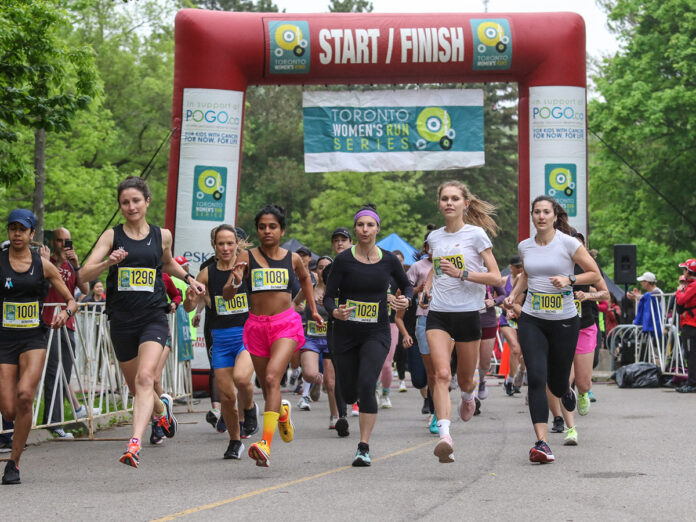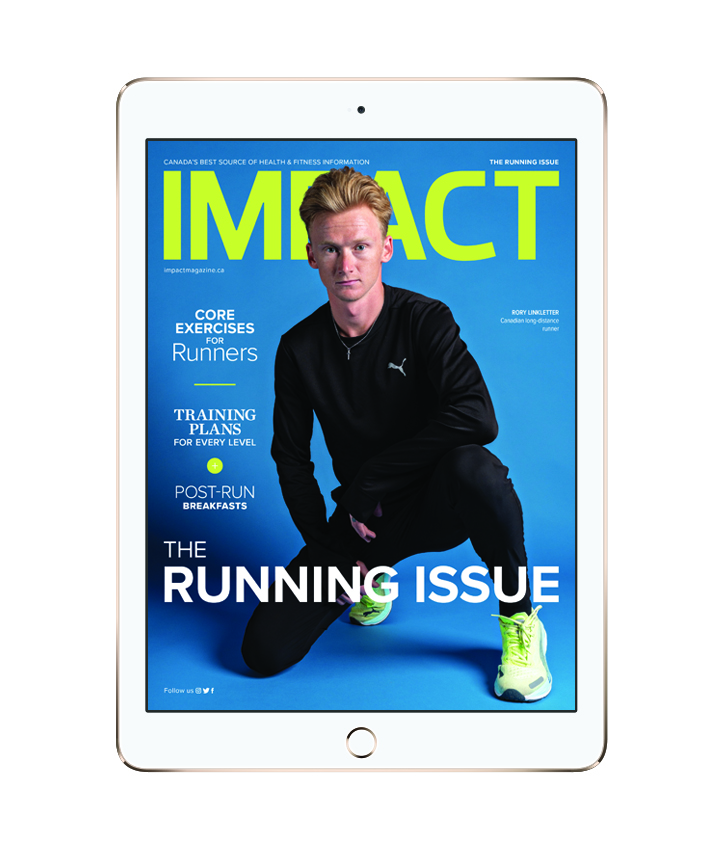
The 10 km is one of the most challenging and rewarding race distances. You begin fast with the excitement of the spectators and fellow participants, then settle into your rhythm and finish strong over the last two kilometres. Would you like to improve your 10 km time but just haven’t been able to shave off the last few seconds? Runners of all abilities can reach their goal 10 km time with this eight-week plan. Before starting this plan you should be comfortable running for 30 minutes at least three times per week. Trust the process and believe in your abilities!
The plan consists of a workout (Thursday), long run (Sunday), two easy runs (Tuesday/Friday), and an optional cross-training day. Running by effort (i.e. how your body feels) at the beginning is the key to determining the running pace that feels best for you. The long run—called Long Slow Distance (LSD)—should be done at a comfortable pace that you could maintain for an hour or more. Think about controlled breathing, relaxed arm swing, low knee lift, and feet touching the ground lightly with each stride. Easy runs are shorter runs during the week where you are running 15-30 seconds faster than your long run. The workouts are a chance to practice race paces and good running form. They consist of a 15-minute easy warm-up run, strides, intervals, and 10 – 15-minute easy cool down.
Coach’s Tips
- Include rest days, strength, and flexibility exercises.
- Wear supportive running shoes with good cushioning. Try a few runs in new shoes before the race.
- Eat a balanced diet, sleep well, and drink water throughout the day.
- Be patient – listen to your body and take time off running early to avoid injuries.
- Be consistent – follow the plan and move the workouts to fit your work/life schedule.
Legend
Strides – Accelerations to practice faster leg turnover and good running form (good posture, knees driving forward, arms bent).
On an 80 – 100 metre flat stretch of pathway or grass, think about starting at an easier pace and finishing fast.
5 km Pace – Based on your last 5 km race or 10 seconds per km faster than your last 10 km race pace.Negative split – Run at your long run pace for the first half of the run and then try to run slightly faster for the second half.
Fartlek – Speed play in a continuous run. They are repetitions where you are running by feel at a perceived level of exertion of 7 – 8 on a scale of 10. Fartlek benefits runners by helping them adapt to changes of pace in a race without needing to take rest breaks, and further boosts their fitness with the active recovery.
Download a PDF of the Training Plan Training Plans
You may also like: How to Take the Half-Marathon to the Next Level

Read This Story in Our 2023 Running Issue
Featuring Rory Linkletter, Canadian long-distance runner. Add to your bucket list with the top Destination Marathons Around the World. Train for 10 km right up to a marathon – plus a 70.3 program. Increase your strength and work your core with Canada’s Top Fitness Trainers. Enjoy plant-based, post-run breakfasts and so much more.
















